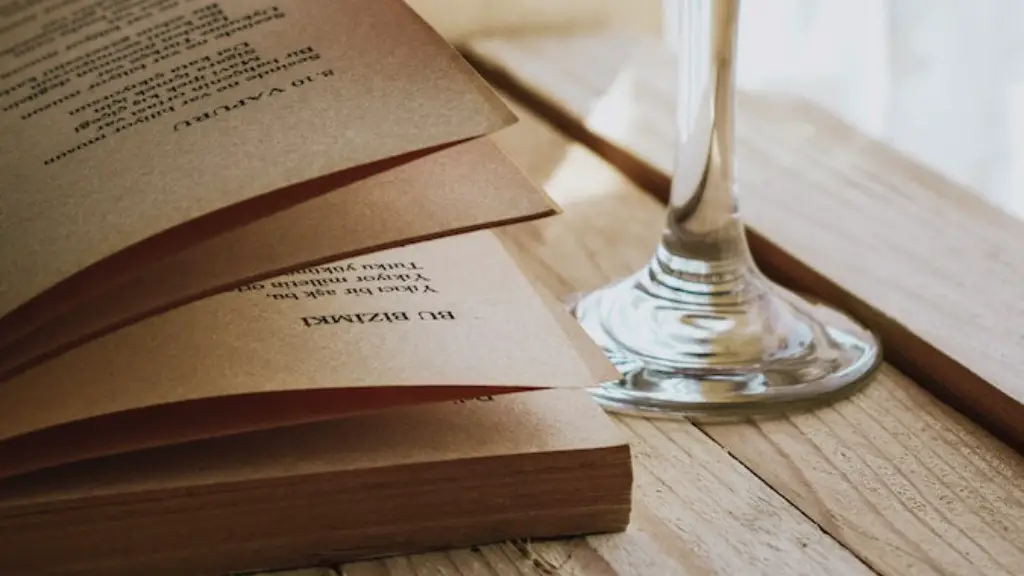how to format poetry in html
Poetry has been around for centuries, with more than three thousand years of history. It has been used to express emotions and to tell stories. With the help of HTML, one can now easily bring the beauty of poetry to the web.
HTML, or Hypertext Markup Language, provides the structure necessary to display poetry in an aesthetically pleasing way, with the words being presented correctly and correctly aligned. An understanding of HTML will also allow for greater control of the presentation, including font size, line spacing, indentation, and font color.
In HTML, poem formatting is handled primarily through the use of paragraphs and line breaks. Paragraphs allow for the text to be easily broken up into distinct sections, while line breaks make sure the lines of the poem remain intact, rather than being split up into disconnected words.
To start, create a new page in HTML, which should include the usual tags and structure. Then, create a section which contains the poem’s text, surrounded by the correct tags. All of the words of the poem need to be wrapped within the
tag, while the line breaks should be placed with the
tag.
When it comes to styling the words of the poem, such as font size and color, this can be handled by using HTML attributes within the paragraph tags. By assigning each line of the poem a unique ID, it becomes possible to assign specific attributes for each line, such as its font color, size, and alignment.
For example, to create a bold font for the first line of the poem, use
and then add the text of the line. Likewise, to make the second line italicized, use
and so on.
However, when it comes to styling the entire poem, such as changing the line spacing or the justification, it is necessary to use Cascading Style Sheets, or CSS. With CSS, it is possible to group all the different lines of the poem into a single block and then assign attributes to it.
For example, to make all the lines of the poem centered, use
within the HTML. Once this is done, the line spacing, font size, and other features can be adjusted through CSS.
adding visual elements with html
To truly bring a poem to life on the page, additional visual elements can be used in HTML. This can include adding images, videos, or even animations.
Images can be used to punctuate specific passages of the poem and make it easier to read. To add an image, use the tag and specify the source of the image.
Videos can be used to add visual context to the poem, allowing it to be experienced with a greater level of immersion. Similar to adding an image, use the
barriers to formatting poetry in html
Although formatting poetry in HTML is fairly straightforward, there are a few potential issues to be aware of. The most common issue is that the poem may not display properly across all browsers. This is because different browsers may interpret the HTML code differently.
Therefore, it is important to test the formatting of the poem on multiple browsers, before making it available to the public. Additionally, it is also important to make sure that the poem remains compatible with different devices and screen sizes.
Another potential barrier to consider is accessibility. It is possible to make poetry accessible to those with disabilities, by utilizing HTML features such as alternative text and closed captioning. Additionally, the use of proper spacing and padding can also help to make sure that those with different visual limitations can access the poem.
using css to optimize the presentation
While it is possible to use basic HTML to format poetry, the presentation can be further enhanced through the use of Cascading Style Sheets, or CSS.
By using CSS, it is possible to control the font size, line spacing, and other attributes of the poem, such as the text alignment and justification. Additionally, it is possible to add visual effects such as animations and transitions.
These effects can be used to create the perfect poem presentation, and ensure that the beauty of the poem is displayed properly and consistently on different devices and browsers.
In order to easily navigate through the poem in HTML, it is important to think about positioning and navigation. This is particularly important if the poem is part of a larger page.
The simplest way to achieve this is to use lists with the
- and
- tags. By creating a set of
- tags within a
- , it is possible to create links to each part of the poem. Then, by supplying the links with # and an “id” value, it becomes possible to quickly and easily jump to the desired section of the poem.
Alternatively, it is also possible to use the CSS “position” attribute to more precisely control the positioning of the poem. This will allow for the poem to be placed in a specific area of the page, and also create a more consistent reading experience.optimizing for search engines
In order for the poem to be effectively discovered online, it is important to optimize it for search engines. The most important factor in this is the use of meta tags, which are snippets of code that allow search engines to understand the content of the poem.
In particular, the use of theand <description> tags is useful, as these provide the search engine with a brief overview of the poem and its content. Additionally, the use of headings with <h2 data-content="7/12"><span id="and_tags_is_beneficial_as_it_allows_the_search_engine_to_quickly_and_easily_understand_the_structure_of_the_page_utilizing_social_media_to_promote_poetry"> and <h2 data-content="8/12"><span id="tags_is_beneficial_as_it_allows_the_search_engine_to_quickly_and_easily_understand_the_structure_of_the_page_utilizing_social_media_to_promote_poetry"> tags is beneficial, as it allows the search engine to quickly and easily understand the structure of the page. <h2 data-content="9/12"><span id="utilizing_social_media_to_promote_poetry">utilizing social media to promote poetry</span></h2> </span></h2></span></h2><p>Once the formatted poem is ready, it is possible to use social media to promote it. This can include sharing the poem on Twitter, Facebook, and other platforms, as well as embedding it into a blog post or article.<br> It is also possible to create a unique hashtag for the poem, which can be used to track engagement and search engine ranking. Additionally, by utilizing influencers and other social media celebrities, it is possible to quickly reach a larger audience.</p> <h2 data-content="10/12"><span id="assessing_performance_of_the_poem">assessing performance of the poem</span></h2> <div class="internal-linking-related-contents-pro"><a href="https://www.poetrypoets.com/who-wrote-the-poetry-for-cats/" class="template-9"><img width="250" height="141" src="https://www.poetrypoets.com/wp-content/uploads/2023/04/poetry_437_poets.jpg" class="alignleft wp-post-image" alt="How To Lay Out Poetry With Text" title="How To Lay Out Poetry With Text"><div class="postTitle"><span><strong>You might like</strong>Who Wrote The Poetry For Cats</span></div></a></div><p>After the poem has been posted and promoted, it is important to assess its performance. This can be done through the use of various analytics tools, such as Google Analytics and others.<br> These tools will provide useful information, such as how many people are viewing the poem and how much time they are spending on it. Additionally, it is possible to track the performance of individual words, phrases, and other elements of the poem, to get a better sense of what people are engaging with.</p> <h2 data-content="11/12"><span id="integrating_digital_marketing_for_further_success">integrating digital marketing for further success</span></h2> <p>Once the poem has been shared on social media and read by a larger audience, it is possible to integrate digital marketing to create further success. This can involve setting up a pay-per-click (PPC) campaign, using influencers and bloggers to feature the poem, or even launching a full marketing campaign.<br> By taking advantage of digital marketing, it is possible to further increase the presence of the poem, leading to greater engagement and an even larger audience.</p> <h2 data-content="12/12"><span id="promoting_related_works">promoting related works</span></h2> <p>Finally, it is also possible to use the poem as a platform to promote related works. This can include books, short stories, essays, or any other works which are related to the poem.<br> By adding links and snippets of related works, it is possible to create additional engagement and drive more traffic to other works. This can be a great way to create a larger presence and increase the reach of the work. </p></description>


